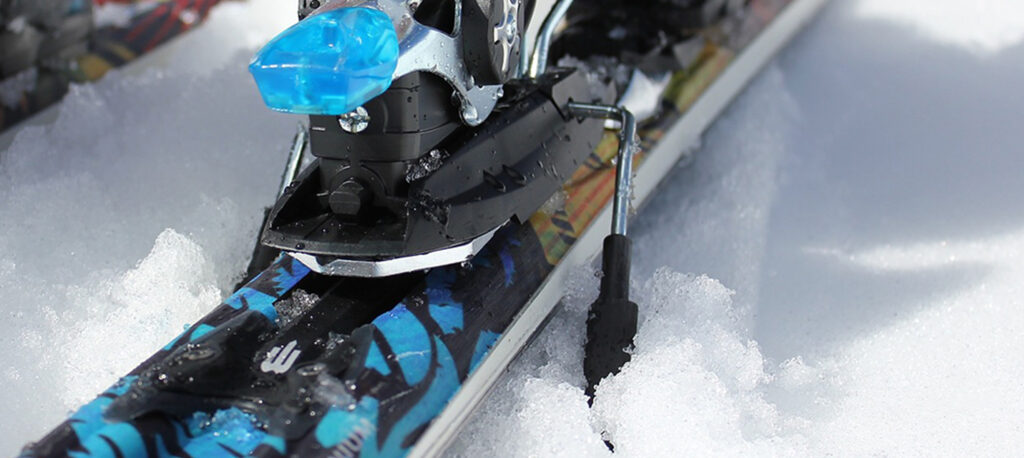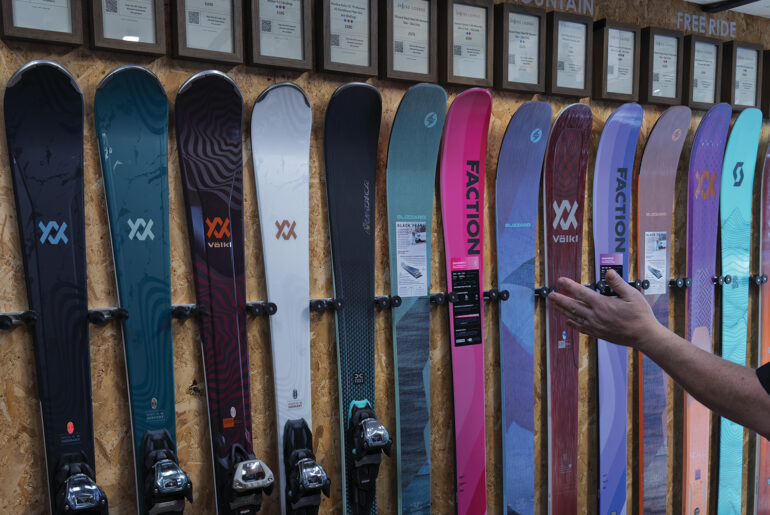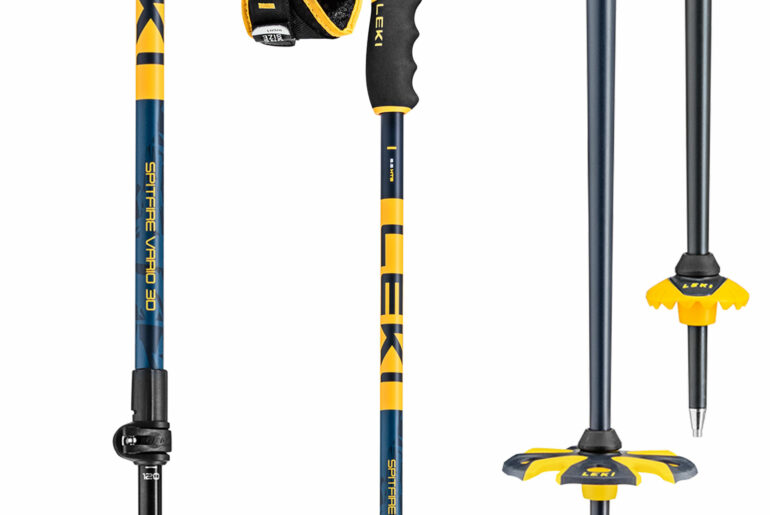Customers often ask which brake width they need for their new skis, or come in with bindings to mount which are not the correct brake width, lets try to help choose the right brake width…
Scott – The Skiers Lounge Buyer
The TL;DR Version: Find the width of your ski waist underfoot which is the middle number of the ski dimensions on your ski (example 127-96-117mm) and add at least 2-10 mm on, as where the brakes sit on the skis is further back than the where the waist is measured. So for 96mm width ski we would be looking at a 100mm to 110mm brake depending on the brand of binding.
It should be simple, ski bindings come with different brake width options, measured in MM, and you simply select the brake width to match your skis and everything works. Or does it?!
Where the ski brake sits on the ski, is not in the centre of the skis. However, the measurement manufacturers give you and sometimes even put in the ski name – The ski waist width, or width underfoot, is at the mounting centre line of the skis, and with some brands varies slightly depending on the length of the skis. So when we determine the correct ski brake binding width we need to consider this and add a few mm to be safe, without going too wide so that they stick out. But it is ALWAYS better to be too wide than too narrow, otherwise your brakes will not drop down when you clip out – or fall out – of your bindings and shoot down the mountain, which is dangerous for others and could loose you a ski!
Also, different ski binding brands measure their brakes differently. Some measure the inside to inside distance when the boot is in the binding (and try measuring that easily!!) some centre to centre, and some outside to outside. Pretty frustrating isn’t it!

If you visit forums, all you will hear is “don’t worry bend your brakes out” but this is NOT a good idea and should be a last resort not a standard practice. When you bend your brakes out or in you effectively weaken them a little. Further, when you bend them out, they move in an arc up to the skis and can end up clearing the ski sides but out of position making them easier to catch leading to them failing to work correctly. We have seen brakes bent on the arms, but the mechanism that keeps them in place is damaged through twisting making the brakes dangerous. So ALWAYS try to use the correct width brake, even if it means spending a few pounds on a different set of brakes – the safety risk just isn’t really worth it.
How do I measure which brakes to buy?
STEP 1: Identify the width of your skis “underfoot” which is the middle measurement of the geometry information normally printed on at least one ski, or shown on the product pages website. So for example 127-96-117 is telling you the tip, waist, and tail widths in MM. so this ski would be 96mm under the foot at the mounting centreline of the ski.

STEP 2: Add 2-10mm to give you the minimum brake width you should opt for. So in this example, we would go for a 100mm to 110mm brake. Each manufacturer produces a range of brake widths, so have a brake a few mm wider than what you know you need. Do NOT go for anything narrower however good a deal it is, and even going the same width can be tricker as the brake may stick on the sides of the skis and not fully drop down to act as a brake. Can you bend them? Yes. Is it a good idea, we generally dont think so. Although the brake at the ends will now be clearing the skis, the shoulders could still be a little too narrow. A small amount of bending is possible, but best just buy the correct width in the first place as bending a ski brake without damaging it is not as simple as it looks!
What happens if I go too WIDE with my brake width?
We actually prefer to be too wide rather than too narrow when it comes to ski binding brakes, as the brake will not get jammed on the side walls of the skis. However, if you go far too wide, the skis when clicked together by the brakes will scissor around a lot which can make handling tricky, and also may stick out beyond the ski width enough for them to drag on the snow when carving hard on the mountain. So for us, in our example, if you have an 96mm ski waist and put a 100mm brake on the skis, that will (just about!) be OK,if you went for a 110mm that would be fine, but a 120mm brake would be too wide, and risk catching the snow or rocks etc.
Still Need Help?
Don’t worry if you still don’t know which brake to go for. Just get in touch with us with your ski details and we can advise you. Also, when we sell skis with bindings here, we will always check what the customer has ordered, and if the brake width selected is suitable we will change this before any mounting takes place to ensure your skis brakes function correctly and remain safe on the mountain




